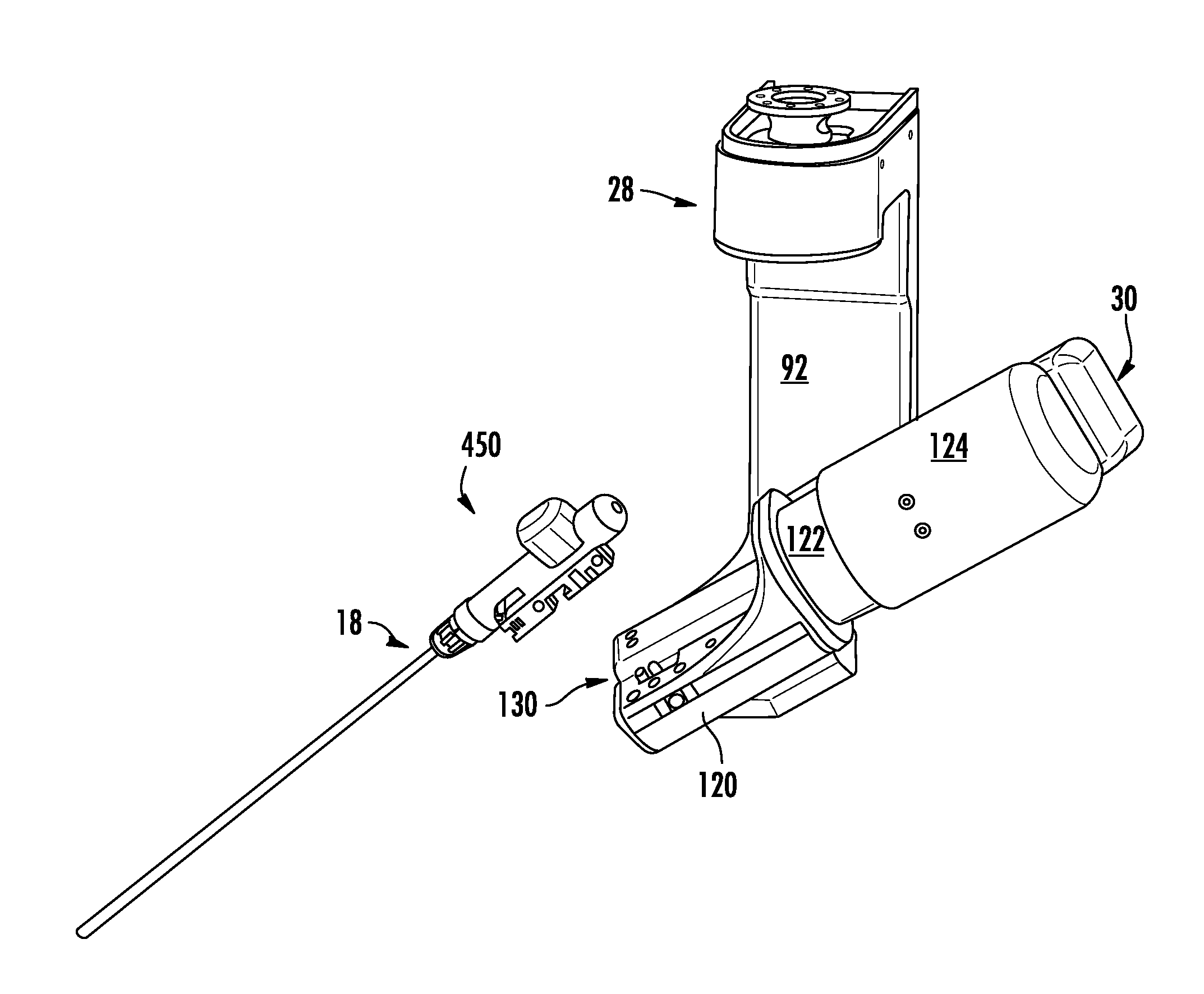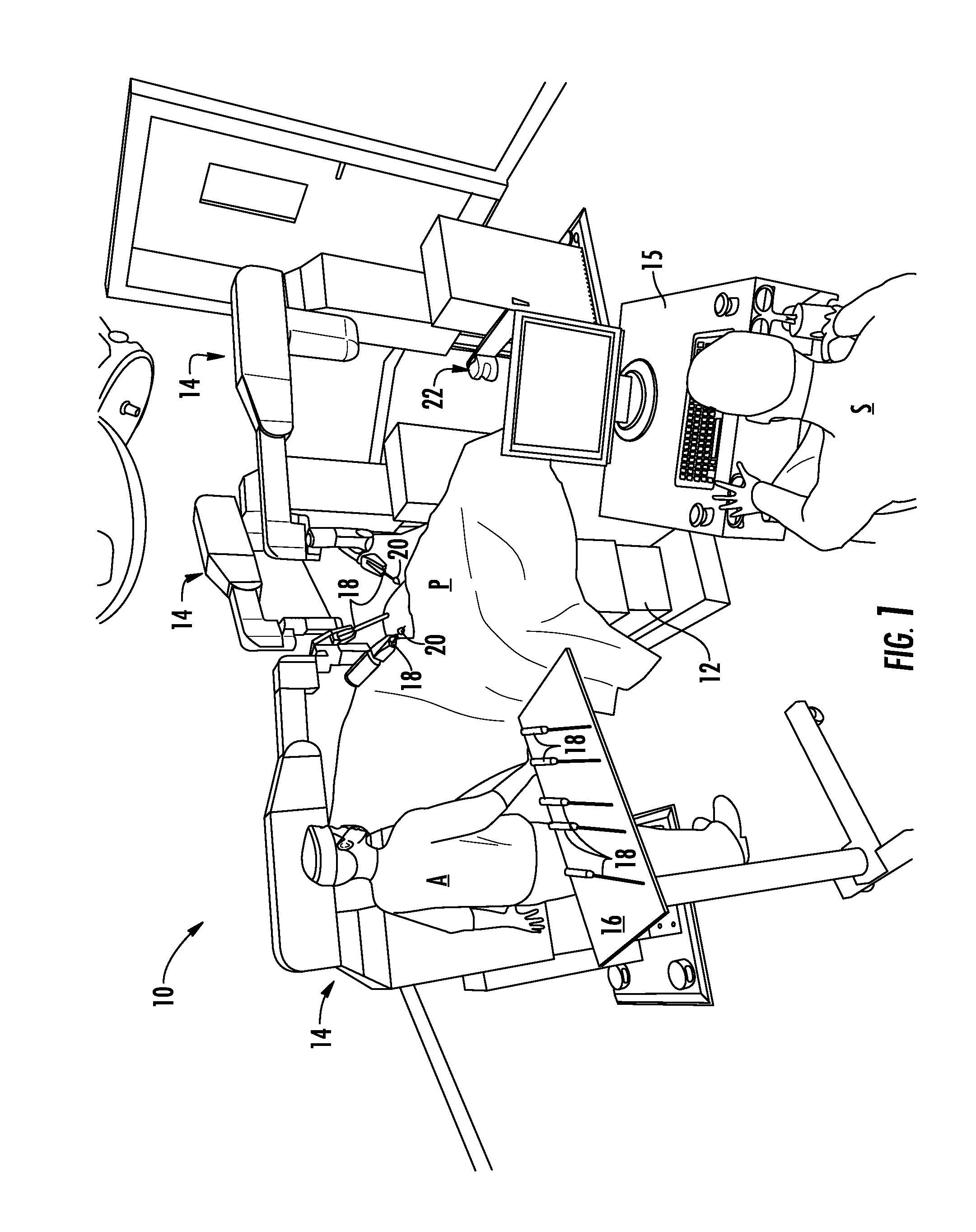Robotic surgical system for performing minimally invasive medical procedures
a robotic surgery and medical procedure technology, applied in the field of medical equipment, can solve the problems of limited field of view, reduced freedom of movement, uncomfortable and tiring operation, etc., and achieve the effects of reducing instrument exchange times, reducing insertion and extraction movements, and improving ergonomics
- Summary
- Abstract
- Description
- Claims
- Application Information
AI Technical Summary
Benefits of technology
Problems solved by technology
Method used
Image
Examples
Embodiment Construction
[0064]FIG. 1 shows a robotic surgical system for generic surgical laparoscopy, generally identified by reference numeral 10. A patient P covered by a sterile sheet is lying on an operation table 12 around which a plurality of robot manipulators 14 are disposed. In the example of FIG. 1, the robotic surgical system 10 is set up for an intervention on the pelvic area. A surgeon S operates a surgical master console 15 and a surgeon assistant A stands near the operation table 12 and near a tray 16 with a set of adapted laparoscopic instruments 18. The robot manipulators 14 are designed for positioning and orienting an effector unit which supports and possibly actuates various kinds of laparoscopic instruments 18. During operation, the robot manipulators 14 are tele-operated by one or more surgeons S via one or more surgical master consoles 15 which are connected to a control unit (not shown). As will be appreciated, the robotic surgical system 10 is modular and configurable according to...
PUM
 Login to View More
Login to View More Abstract
Description
Claims
Application Information
 Login to View More
Login to View More - R&D
- Intellectual Property
- Life Sciences
- Materials
- Tech Scout
- Unparalleled Data Quality
- Higher Quality Content
- 60% Fewer Hallucinations
Browse by: Latest US Patents, China's latest patents, Technical Efficacy Thesaurus, Application Domain, Technology Topic, Popular Technical Reports.
© 2025 PatSnap. All rights reserved.Legal|Privacy policy|Modern Slavery Act Transparency Statement|Sitemap|About US| Contact US: help@patsnap.com



